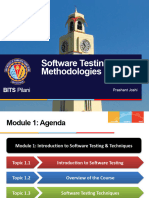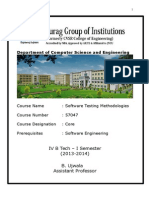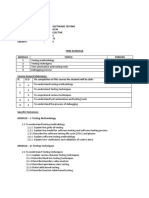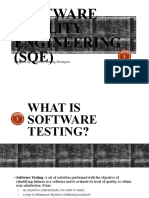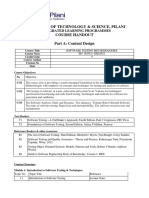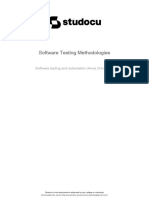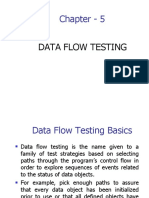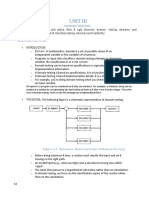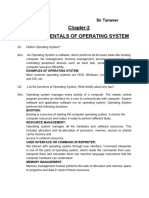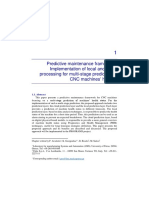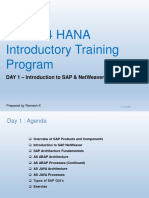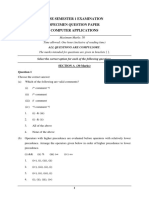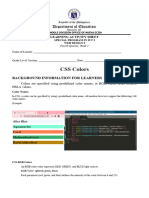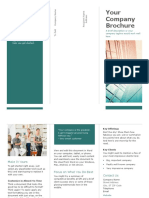0% found this document useful (0 votes)
507 views2 pagesSTM Syllabus
This document outlines the course objectives, units, outcomes, and textbooks for a third year software testing methodologies course. The course covers various software testing techniques including path testing, dataflow testing, domain testing, syntax testing, logic based testing, state transition testing, and automated testing tools. The objectives are to describe test case design principles and procedures, provide debugging support, and act as a reference for software testing strategies. Upon completing the course, students should be able to generate test cases and suites, perform manual and automated testing, and apply tools to resolve real-world testing problems.
Uploaded by
PAVANCopyright
© © All Rights Reserved
We take content rights seriously. If you suspect this is your content, claim it here.
Available Formats
Download as PDF, TXT or read online on Scribd
0% found this document useful (0 votes)
507 views2 pagesSTM Syllabus
This document outlines the course objectives, units, outcomes, and textbooks for a third year software testing methodologies course. The course covers various software testing techniques including path testing, dataflow testing, domain testing, syntax testing, logic based testing, state transition testing, and automated testing tools. The objectives are to describe test case design principles and procedures, provide debugging support, and act as a reference for software testing strategies. Upon completing the course, students should be able to generate test cases and suites, perform manual and automated testing, and apply tools to resolve real-world testing problems.
Uploaded by
PAVANCopyright
© © All Rights Reserved
We take content rights seriously. If you suspect this is your content, claim it here.
Available Formats
Download as PDF, TXT or read online on Scribd
/ 2














